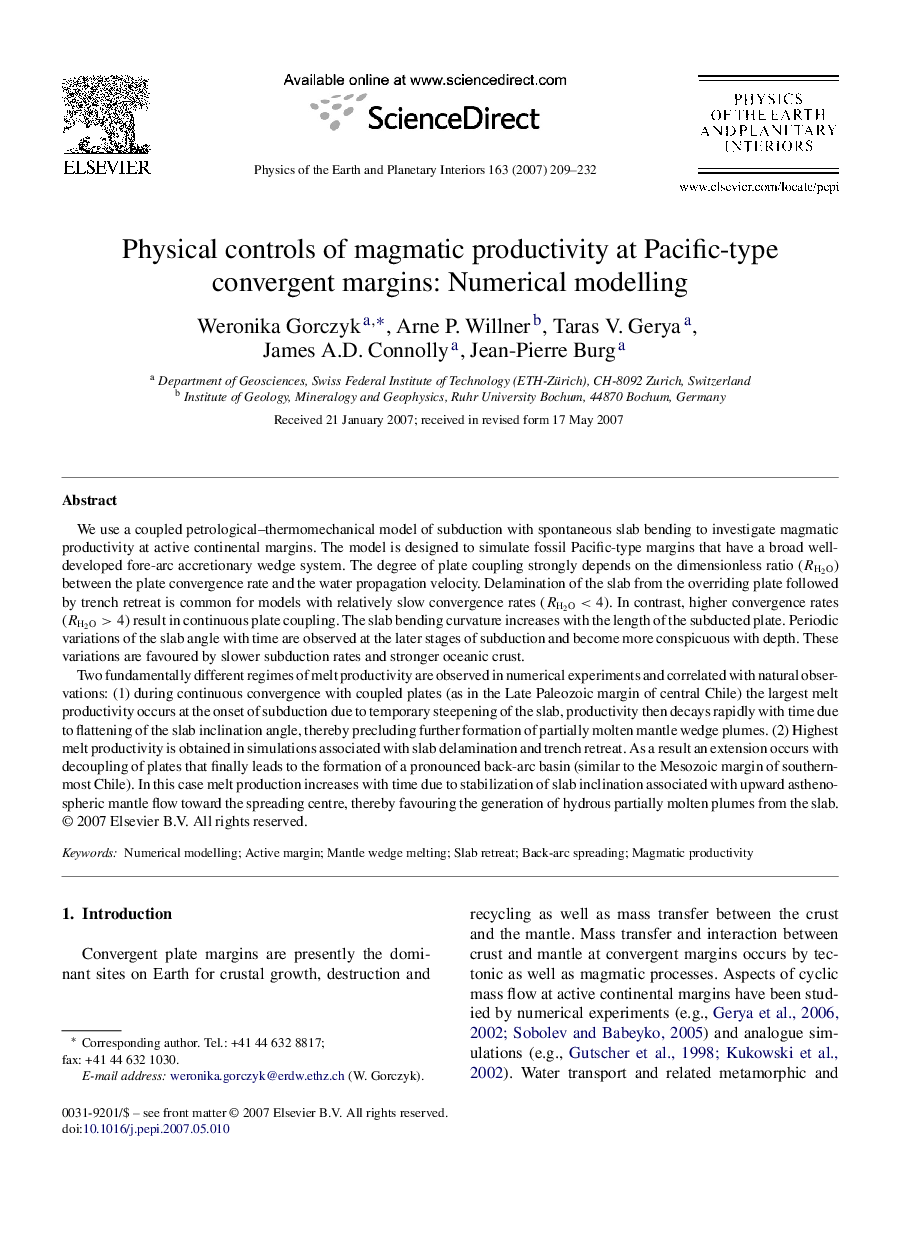| کد مقاله | کد نشریه | سال انتشار | مقاله انگلیسی | نسخه تمام متن |
|---|---|---|---|---|
| 4742851 | 1641589 | 2007 | 24 صفحه PDF | دانلود رایگان |

We use a coupled petrological–thermomechanical model of subduction with spontaneous slab bending to investigate magmatic productivity at active continental margins. The model is designed to simulate fossil Pacific-type margins that have a broad well-developed fore-arc accretionary wedge system. The degree of plate coupling strongly depends on the dimensionless ratio (RH2ORH2O) between the plate convergence rate and the water propagation velocity. Delamination of the slab from the overriding plate followed by trench retreat is common for models with relatively slow convergence rates (RH2O<4RH2O<4). In contrast, higher convergence rates (RH2O>4RH2O>4) result in continuous plate coupling. The slab bending curvature increases with the length of the subducted plate. Periodic variations of the slab angle with time are observed at the later stages of subduction and become more conspicuous with depth. These variations are favoured by slower subduction rates and stronger oceanic crust.Two fundamentally different regimes of melt productivity are observed in numerical experiments and correlated with natural observations: (1) during continuous convergence with coupled plates (as in the Late Paleozoic margin of central Chile) the largest melt productivity occurs at the onset of subduction due to temporary steepening of the slab, productivity then decays rapidly with time due to flattening of the slab inclination angle, thereby precluding further formation of partially molten mantle wedge plumes. (2) Highest melt productivity is obtained in simulations associated with slab delamination and trench retreat. As a result an extension occurs with decoupling of plates that finally leads to the formation of a pronounced back-arc basin (similar to the Mesozoic margin of southernmost Chile). In this case melt production increases with time due to stabilization of slab inclination associated with upward asthenospheric mantle flow toward the spreading centre, thereby favouring the generation of hydrous partially molten plumes from the slab.
Journal: Physics of the Earth and Planetary Interiors - Volume 163, Issues 1–4, 15 August 2007, Pages 209–232